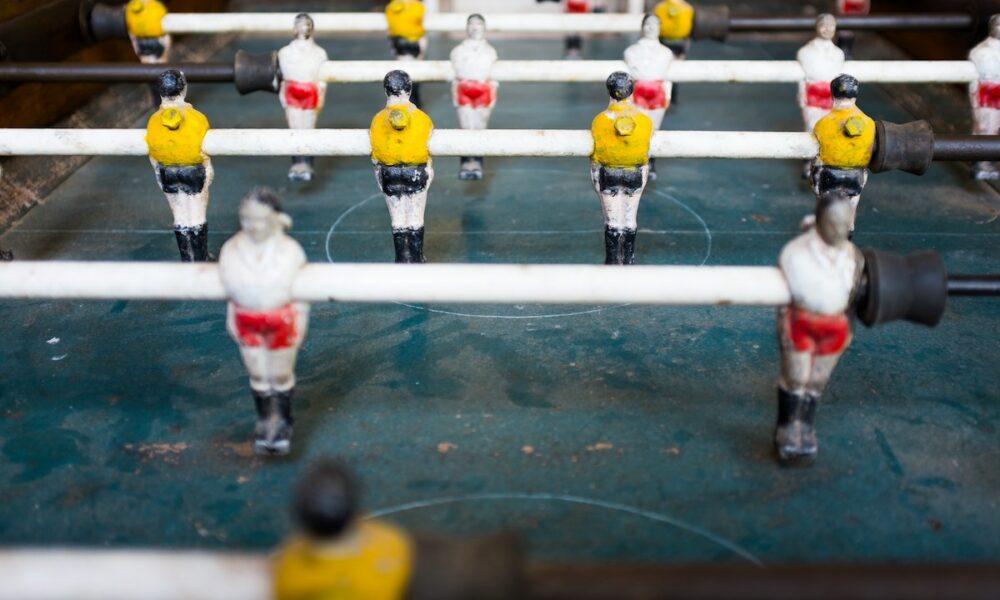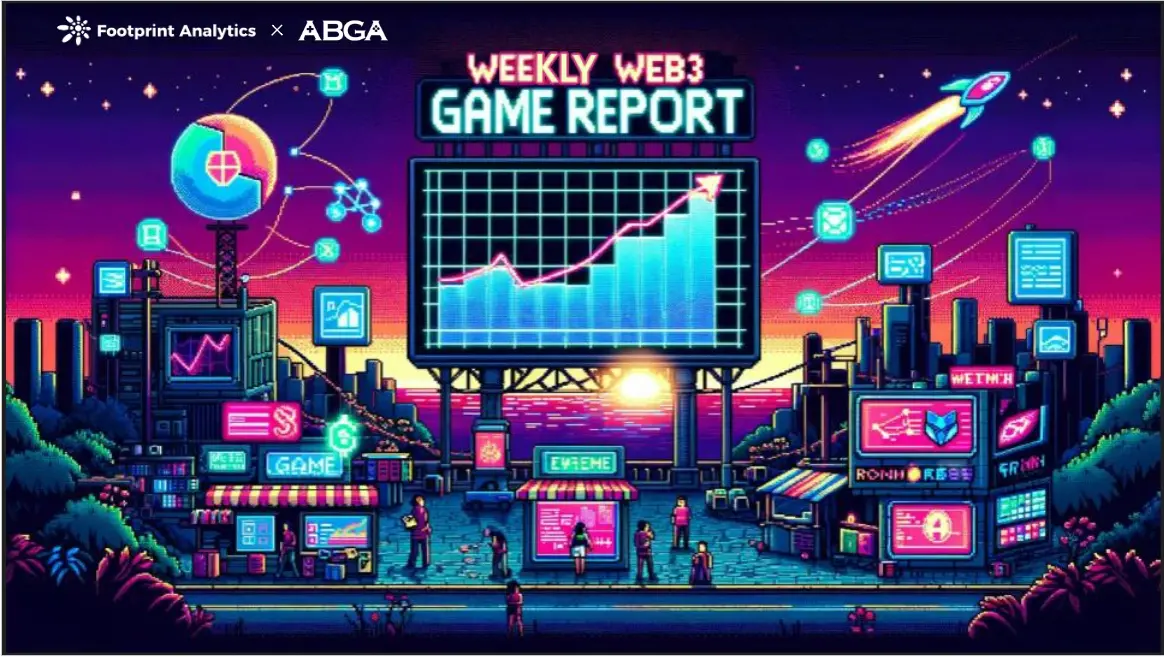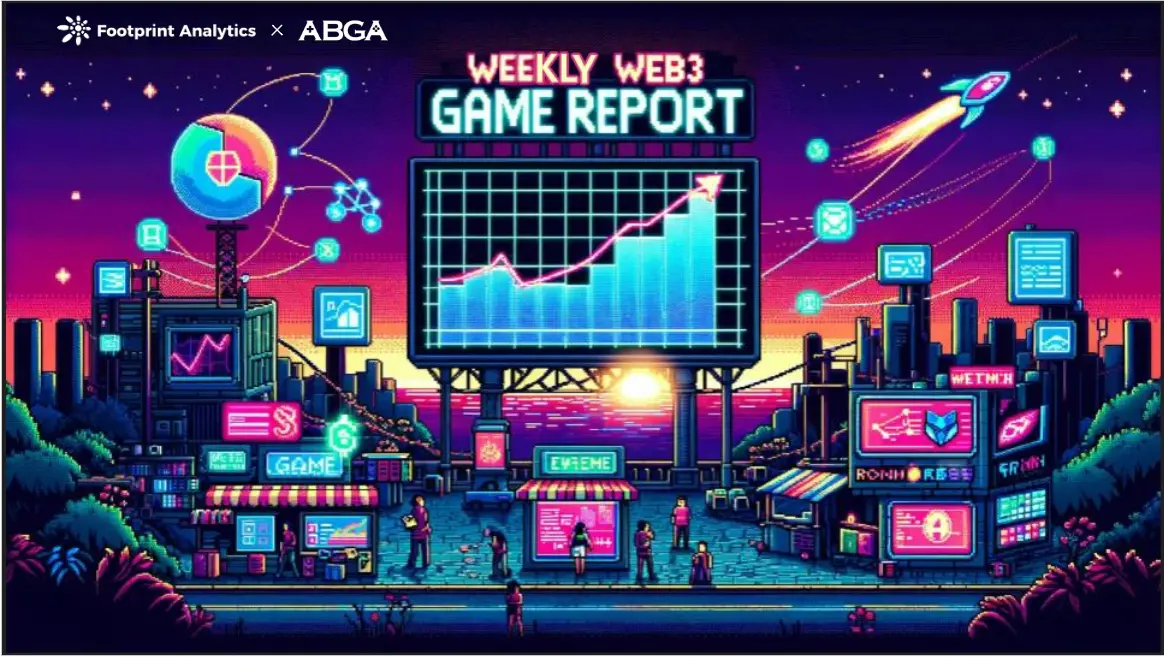Inventory of Aggregation Application Platforms in the GameFi Track: Represented by Mobox and Gala Games
Source: Hive Finance News
Since Facebook's parent company changed its name to "Meta" and laid out its plans for the metaverse, internet giants and capital have been following suit. In early November, Nvidia announced its plans for virtual identities; Microsoft stated it would integrate virtual experience collaboration platforms and introduce metaverse elements; SoftBank led a $98 million investment in the blockchain metaverse game The Sandbox.
With an economic system formed by crypto assets, blockchain games are becoming the most easily monetizable products in the process of the "metaverse" landing. Currently, the popular "Game + DeFi" model of GameFi is the hottest, which may also be a significant reason for SoftBank's investment in The Sandbox.
The "Game + DeFi" attributes of GameFi present two operational logics in products. One is to gamify the rules of financial attributes such as liquidity farming yields, trading, and lending by supplementing DeFi (on-chain open finance) with game elements. For example, gamifying the process of DeFi liquidity farming yields or integrating NFT (non-fungible token) elements to generate game equipment and enhance farming yields. The other is to focus on games, using NFTs to financialize game assets, allowing assets generated during gameplay to be on-chain, enabling these assets to circulate, exchange, and monetize in the crypto market, known as "play-to-earn."
Under this logic, the GameFi track has formed various blockchain games, and a trend of integrated development has emerged. In addition to standalone games, capital has also begun to focus on the infrastructure of this track, such as cross-chain aggregation application platforms for blockchain games (entry points for blockchain games) and building foundational public chains for games, with the former concerning the user experience of traffic.
Compared to online games, the biggest advancement of blockchain games is the increased liquidity of game assets, enhancing the economic system and financial attributes. However, what hasn't changed is that blockchain games still cannot interconnect due to different chain mechanisms. Just like you can play Tencent's League of Legends and NetEase's Fantasy Westward Journey, the equipment and virtual assets generated in these two games do not interoperate and cannot be exchanged.
Today's blockchain games are similar. With the blooming of foundational public chains, various blockchain games run on different blockchain networks, and players often switch between different blockchain networks in their wallets based on market trends. The cumbersome operation is just one issue; more importantly, game assets on different chains can only circulate in their respective chain markets, and players hope that blockchain can solve the pain points that the internet could not address in the past.
Is it possible to have a one-stop platform entry for GameFi? Can NFT assets from different games circulate on the same platform? Can players have a unified management account without switching blockchain networks?
In fact, on-chain developers of GameFi have already noticed this demand, and integrated GameFi applications are emerging. This issue of DeFi Hive will review representative products under this trend in two parts.
DeFi Liquidity Farming Game Entry: Mobox
Introduction
Mobox is a GameFi platform built on the BSC blockchain. As its name suggests, it is a "box" filled with many blockchain games centered around "DeFi liquidity farming" as the core gameplay. Mobox resembles a large arcade hall where players can play various mini-games, including farming mining games, combat games, and more.
Mobox gamifies the process of "DeFi liquidity farming" (referred to as liquidity mining by domestic players). After players stake a certain amount of crypto assets into the game, they form game characters in the form of NFTs, with characters "mining" in the "mining field," and small "mining carts" periodically transporting the produced "minerals," creating a vivid and entertaining visual experience.

Mobox Official Website
The block pet MOMO is an essential element in the Mobox ecosystem. It is the player's character NFT in the game, and various game scenes in the ecosystem are designed around the MOMO NFT, with all mini-games linked through the MOMO NFT.
Each MOMO NFT represents a different player, with a randomly generated computing power value behind it, which will determine the player's earnings in the game.
Since each block pet MOMO NFT represents different players, players can choose different appearances to represent themselves in the game. Based on appearance, MOMO NFTs are categorized into five types: bird, beast, fish, monster, and human; each type has quality differences, divided into five levels: common, good, excellent, rare, and epic. Characters of different levels have different skills and computing power values. Players can upgrade their character quality by consuming other lower-quality MOMO NFTs to enhance their computing power and increase their earning potential.
Mobox aims to create a metaverse world centered around the MOMO NFT and plans to achieve cross-game and cross-platform interoperability with this NFT. The crypto asset with the code MBOX is generated by the Mobox platform and has rich functionalities; it serves as fuel for accelerating the upgrade of game characters and abilities, and it is also the settlement currency for players after earning rewards in the game.
Initially, users could provide liquidity for the "MBOX-BNB" fund pool built into the MOMO farm to earn MBOX rewards, but this reward activity has now ended. Currently, after players generate MOMO NFTs, they can automatically produce MBOX, with the output quantity depending on the proportion of the MOMO NFT's computing power value to the total computing power value of players in the game.
Gameplay
To play Mobox games, one must understand its three ecological segments: DeFi segment ------ MOMO farm, where players lock up crypto assets to earn MBOX; blockchain game segment ------ such as Token Master, where players participate in games using MOMO NFT characters to earn game rewards; UGC segment ------ this game encourages advanced players to create gameplay for MOMO NFTs or use other in-game assets to create new games.
To play Mobox, you need to have a block pet MOMO NFT character, which can be obtained in the following ways:
Directly purchase in the MOBOX NFT market, currently supporting BUSD payment;
Rent from the MOMO NFT rental market, with rental periods generally lasting 30 days. Different character types and levels require different rental fees, usually around 9-10 BUSD;
Open blind boxes to obtain characters. Blind boxes need to be purchased from the MOMO NFT market, also with BUSD payment; opening blind boxes requires a KEY asset, which can be exchanged on DEXs on the BSC chain.
Once users obtain a MOMO NFT character, it will automatically generate computing power to produce "minerals" MBOX rewards. Of course, holding this character allows players to play various games within MOBOX to earn game rewards.
Games
- Strategy Combat Game Block Brawler
Block Brawler is a strategy-focused RPG (role-playing game) with a total of six hero classes: barbarian, duelist, monk, ranger, assassin, and witch. Players can collect equipment sets through smelting, combining skills and talents to form a powerful combat style to battle against other heroes or bosses.
The game has weekly leaderboards, and those who successfully make the list can earn MBOX rewards. To rank, players must continuously enhance the computing power value of their MOMO NFTs, as this value determines their ability to collect coins, gather equipment, and skill books in Block Brawler—coins can upgrade equipment and character levels, while skill books can upgrade skills. Accordingly, the higher the computing power value of the MOMO NFT, the more efficient the coin collection, and the stronger the hero's combat power, increasing the chances of winning battles and making it possible to rank.
Of course, the game also allows players to "pay to win"—by paying MBOX to accelerate mining, directly obtaining coins, equipment, and skill books.
- Casual Game Token Master
Token Master is a turn-based casual game where players need to increase their total coins and compete against each other to ultimately become the "Coin Master" with the most coins.
In this game, your MOMO NFT character will generate some coins, and the coin generation speed also depends on your character's computing power value. Additionally, "plunder," "arena," "monopoly," and "adventure" are also important ways to generate coins.
"Plunder" and "arena" games are turn-based combat modes. In "plunder" mode, players can send three MOMO NFTs to battle and plunder coins from other players; in each battle, defeating one MOMO NFT of the opponent earns one star, and the more stars, the more coins can be plundered. In "arena" mode, players must first pay MBOX as a bet to participate in the challenge, or they can initiate a challenge and wait for other players to compete. The winner will earn the opponent's MBOX.
"Monopoly" and "adventure" are games where players individually increase their earnings. Your MOMO NFT character can choose from three "adventure" routes, each randomly rewarding a certain amount of MBOX. Players can adventure once a day, but the MOMO NFT for "adventure" needs to be of rare quality and high level, so beginners cannot participate. "Monopoly" is a lucky spin game; every time you consume 26 MBOX in the game, you can spin the wheel for a chance to win 2x, 5x, 10x, or even thousands of times the coin return.
With a 7-day season, there will be a leaderboard for players' coin counts, and those who make the list can earn MBOX rewards.
- Simulation Trading Competition Trade Action
Trade Action is a trading simulation competition game where players can use virtual assets for simulated investments. They can set investment strategies based on their trading knowledge, observe other players' trading strategies, and compete in "who is the smartest investor."
Currently, there are three types of simulation competitions available—"Millionaire," "Crazy Leverage," and "Bull and Bear Battle." Players do not need to pay any fees; the competition will rank based on trading profit results and award MBOX rewards.
Millionaire—In this game, players will receive a virtual asset of $1 million, which can be used to buy and sell cryptocurrencies for profit. Players' rankings depend on their gains and losses; the higher the rank, the more MBOX rewarded. This game is somewhat similar to the virtual trading competitions often held by cryptocurrency exchanges in the past, allowing players to hone their trading skills during the competition.
Crazy Leverage—Similar to Millionaire, users can choose to buy or short with leverage of 100-1000 times, and then rank based on gains and losses.
Bull and Bear Battle—A betting game where players must predict the trend of Bitcoin within 120 seconds. If they predict a rise, they bet on bulls; if they predict a fall, they bet on bears. Correct judgments earn points, and the point results will be counted in the leaderboard to assess rewards.
On-chain Version of Steam "Arcade" Gala Games
Introduction
Gala Games is a decentralized gaming platform built using blockchain technology, serving both as a game developer and a game store. Its main functions include maintaining the platform's decentralized network, game development, game publishing, and a marketplace for trading game items.
In addition to games developed by the Gala Games team, the platform also attracts other game studios to launch externally developed games, aggregating various blockchain games, hoping to become an entry point for both game developers and players. You might think of Steam, the world's largest comprehensive digital distribution platform, where gamers purchase, download, discuss, upload, and share games and software. Indeed, Gala Games aims to position itself as the "Steam" on the blockchain.

Gala Games Official Website
In the decentralized Gala Games ecosystem, due to the existence of blockchain technology, players have complete control over their game assets, which are recorded on-chain and will not be lost if the game company ceases operations. Additionally, game assets on Gala Games can be migrated to other games, which is a significant feature distinguishing it from traditional games.
For example, in the mobile game "Honor of Kings," a player's bronze sword is a game asset that can only be used in that game. The game developer can modify the sword's appearance, but if "Honor of Kings" shuts down, your sword will cease to exist along with the system, and the ownership of that sword belongs to the game developer.
In contrast, in blockchain games on the Gala Games platform, if you obtain a sword, it is represented as an NFT. You can upgrade it, and all its information is recorded on the blockchain, making it immutable. Even if the game stops, the sword still belongs to you; you can transfer it to others or choose to migrate it to other blockchain games.
Gala Games not only allows players to have absolute control over game assets but also enables players to sell and monetize the game assets they earn in blockchain games directly through the NFT trading market provided by the platform.
In the future, Gala Games plans to form a separate blockchain network to reduce users' on-chain operation costs. To ensure game experience, the platform supports the game itself to run off-chain, while game items and assets that perform different functions in the game will be minted as NFTs on-chain based on demand. The on-chain NFT items can exist independently of the game and be traded outside the game, meaning that the Gala Games platform may help traditional games easily put players' game assets on-chain, potentially creating a circulation venue.
GALA is the token of the Gala Games platform, primarily used for staking as a node to maintain the normal operation of the blockchain network hosting the game. Additionally, GALA is one of the essential assets for purchasing game items in the NFT market.
If you are simply a GALA collector, you can participate in the Gala Games ecosystem, stake GALA to become a node or purchase nodes, providing decentralized computing power support, transaction verification, and storage services for the platform, thus earning GALA rewards and random game NFT rewards within the ecosystem.
Representative Games
- Farm Management Game Town Star
Town Star is the first game launched on the Gala Games platform, simulating farm management with a certain level of strategy and competition. Players can choose plots on a virtual Earth to establish towns, obtaining stars through agricultural planting, product manufacturing, and commercial trade.
In simple terms, this game is about how to quickly build a high-GDP town. In the game, various buildings come with workers who will always perform their respective duties. Players need to create a superior and low-cost environment, ensuring that workers take the path of least resistance while efficiently completing their tasks.
For example, a piece of land near a river may not be suitable for building a town, but because it is close to water, it can be used to plant wheat or sugarcane. At this point, you need workers to help you water and manage agriculture, but how to allocate tasks to workers is up to the player; once the crops mature, players need workers to transport them to the town for sale, requiring basic resources like trucks and gasoline. Due to limited resources, players must control the gasoline consumption for each truck trip and continuously adjust their management strategies, coordinate resources, and maximize profits. The land players manage and the game items are represented as NFTs, all of which can be sold and circulated in the trading market.
TOWN is the reward token for the Town Star game, but due to the complexity of the specific reward rules, which require calculating various scores and asset weight ratios, this design has brought trouble to players and is a flaw that has been criticized by players.










